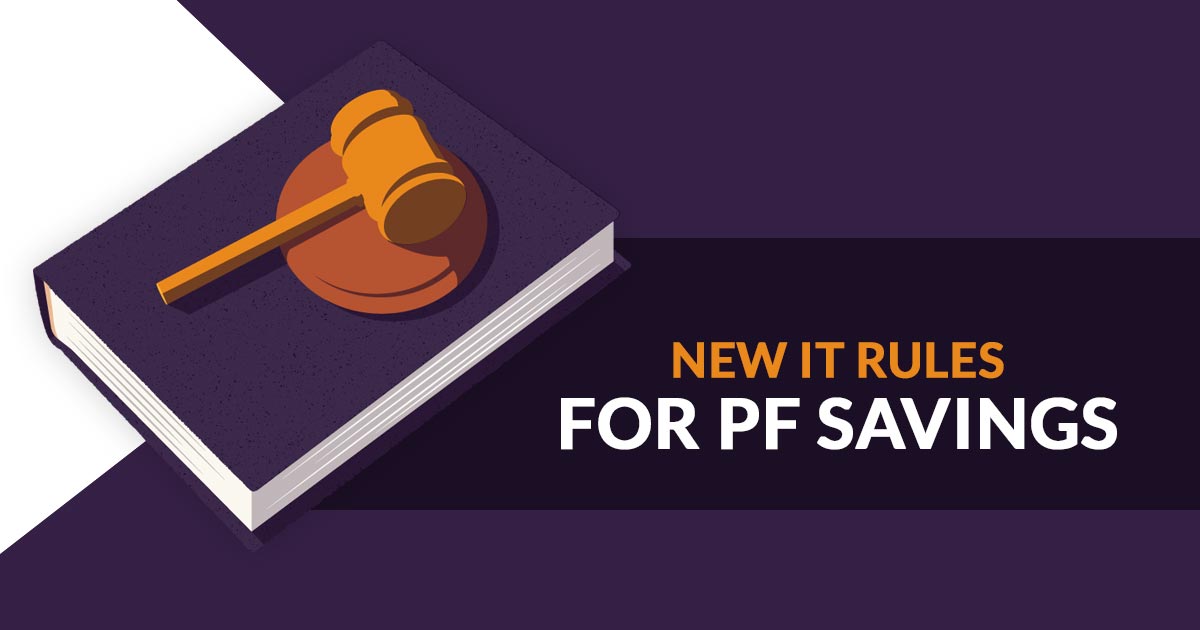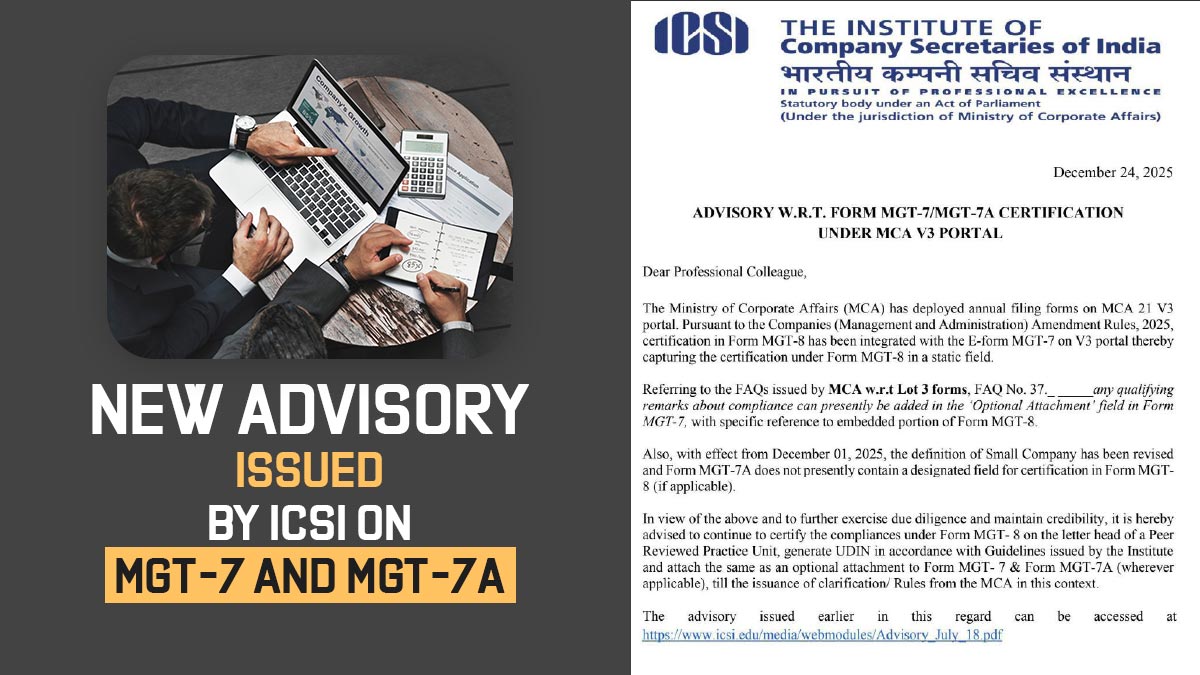
The Finance Ministry of India has recently announced the latest set of rules notified under the Income Tax Act for provident fund (PF) savings. The 2021-22 budget speech of Finance Minister Nirmala Sitharaman mentioned that the income on contribution towards PF would be taxed for above INR 2.5 lakh but further, it was extended to more than INR 5 lakh government employees but for those having no contributions from employers.
Intentions Behind the Income Tax Rules on PF
Until now, the provident fund saving was tax exempted which ensured the most benefit to the retiring group of people. But behind there was a lot going on in which there were some people investing more than the normal income i.e. more than 1 crore per month which was incomparable to the low-income group people. Therefore it has been decided to tax them appropriately.
The budget also mentioned that “This exemption without any threshold benefits only those who can contribute a large amount to these funds as their share.” After the backlash, the government cleared some outstanding figures including INR 62,500 crore deposited by the 1.23 lakh net worth individuals (HNIs) in 2018-19.
Apart from that one of the accounts holds more than INR 103 crore and around 20 HNIs have more than 825 crore. Also, 0.27 per cent of members have an average 5.92 crore balance giving them around 50 lakh tax-free interest income.
The government had earlier also tried to tax the EPF accounts and also made announcements to levy a 60% tax on the EPF accounts but the announcements did not make any final rule. In last year’s budget, the government capped the employee welfare schemes including EPF, the National Pension System (NPS) and the superannuation plan with INR 7.5 lakh per year.
Provident Fund (PF) Accounts Getting Impacted
All the accounts which are currently under maintenance by the General Provident Fund (GPF) and the Employees’ Provident Fund Organisation (EPFO) having government employees saving for their retirement would be coming under impact. Some companies running in-house expert trust of EPF do manage the complete PF of their employees to save their valuable time & energy.
However, note that the savings under retirement in the National Pension System (NPS) and the Public Provident Fund (PPF) accounts are not going to be impacted by these changes.
There is a simple rule for all the employees having INR 15,000 or more per month income to make contributions to the EPF with 12% give up contributions from both employee and employer individually.
But the private sector employees can make voluntary contributions as per their wishes even apart from the statutory contributions, in the EPF or the GPF. The EPF demands an INR 2.5 lakh contribution for the limit while the PFs or the GPF limit is set at INR 5 lakh.
Read Also: Generate PF and ESI Challan Via Gen Payroll Software
Reasons to Apply These New Rules as Tax
The tax provision closely resembling this came in the budget for the annual premium payment incomes of more than INR 2.5 lakh in the unit-linked insurance investments, but the income from them would be considered capital gains
The PF accounts were not cleared nor explained on the operational features. As if the practitioner doesn’t even know the tax applicability on the amount withdrawn of PF or even the return or the situations of annual income accrual every year.
And all this, if PF trustees should have to tax deducted at source on annual income or it, should be added to the annual income and the regular tax payment should be done? All these queries are in the queue of the assumptions and guesses that this tax levy may come over the previous contributions in the PF and also on the limited exemption of tax.
PC Mody of the Central Board of Direct Taxes said that taxpayers are required to see through earned income from the contributions made above the INR 2.5 or the INR 5 lakh limit when they are filing the taxes. As there is a delay in the interest credits reflecting the EPF account, the rates of EPF and the credit to the account members is an altogether different task.
New Income Tax Rule Over PF Tax
There is the latest rule in the book namely Rule 9D, for the taxable interest calculation concerned with the provident fund contribution. The new rule will be taking PF accounts and making them apart for the calculation of interest earned and contribution taxation. This would include all the closing balances of all the accounts of PF on 31 March 2024. It also has fresh non-taxable interests and contributions.
The government has supported the fact that this will be giving out the exact clarification on the taxable income of PF of a year but the transparency and the clarity is still unknown. The confusing part is that from where the tax has to be deducted, i.e., is it from taxable income of total income or the EPF account while returning filing.
Currently, the solution comes from the 2 accounts being created for the direction towards deductions of tax from the PF trust and the EPF earned income i.e. the ‘taxable contribution’ concerning the EPF account and remitting in every year’s exchequer.
It is a tough requirement to maintain two separate accounts for compliance of the trustees of EPFO and other PFs. To put into perspective the administrative overhaul required for such accounting, consider that the EPFO has 24.77 crore members with EPF accounts. From them, about 14.36 crore members received Unique Account Numbers (UANs) by the end of 2019-20.
Of these, about 5 crore members were active contributors to their EPF accounts during 2019-20. Even though a technical solution has been devised to replace the existing system and provide two EPF accounts for each member, there are some other concerns too.
To deduct tax at source, the EPFO or individual PF trustees will be required to issue a tax deduction certificate or IT Form 26AS for all such members.
Whether EPFO, the country’s largest retirement fund manager with assets of around Rs 15 lakh crore under management, was consulted on the rules or is ready to transition to the proposed system is not known at this point.
Is There Anything You Can Do to Comply with the New Rules in Your PF Account?
At the moment, as a PF account holder, you have nothing to do but keep a close watch on the developments. If your contribution to EPF as an employee exceeds ₹20,833.33 per month or ₹41,666.66 in the case of PF accounts without employer contribution, you may wish to re-evaluate whether such contribution should continue on a voluntary basis or not.
Now, when the bank deposit rates are low and inflation high, it is a good time to consult with your accountants or investment advisors to see if EPF income remains relatively attractive even after taking tax deductions as per your income tax bracket.
The responsibility of creating two accounts from each PF account clearly lies with the administrators of the EPF, GPF, and the PF Trust managed by the company. Hence, keep a watch on the EPFO release regarding any formalities that may arise for splitting EPF accounts.
In case your employer handles your PF in-house through an exempt trust, check for similar updates or notes from trustees or HR or Accounts departments about the steps they are planning to take.










Nice post